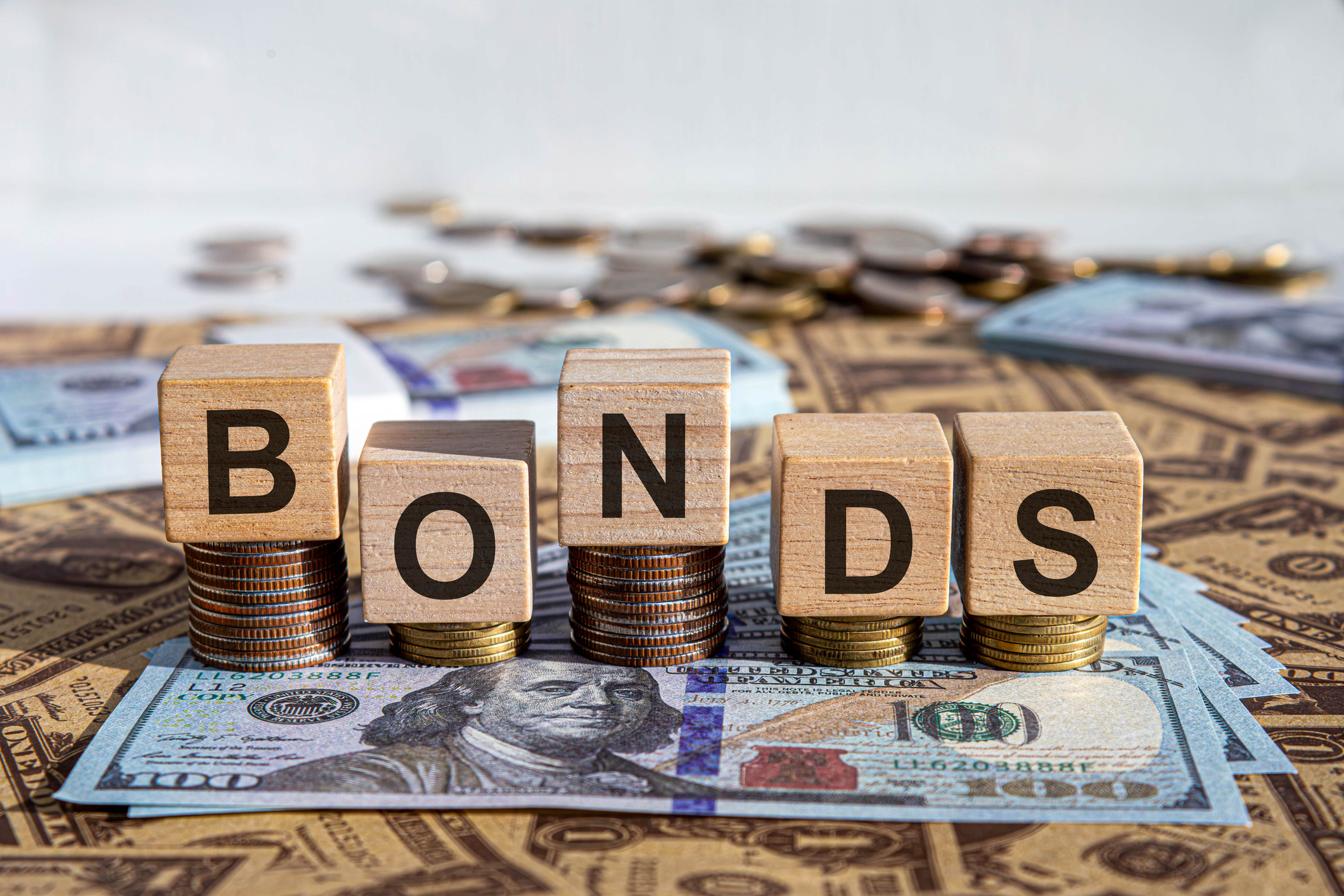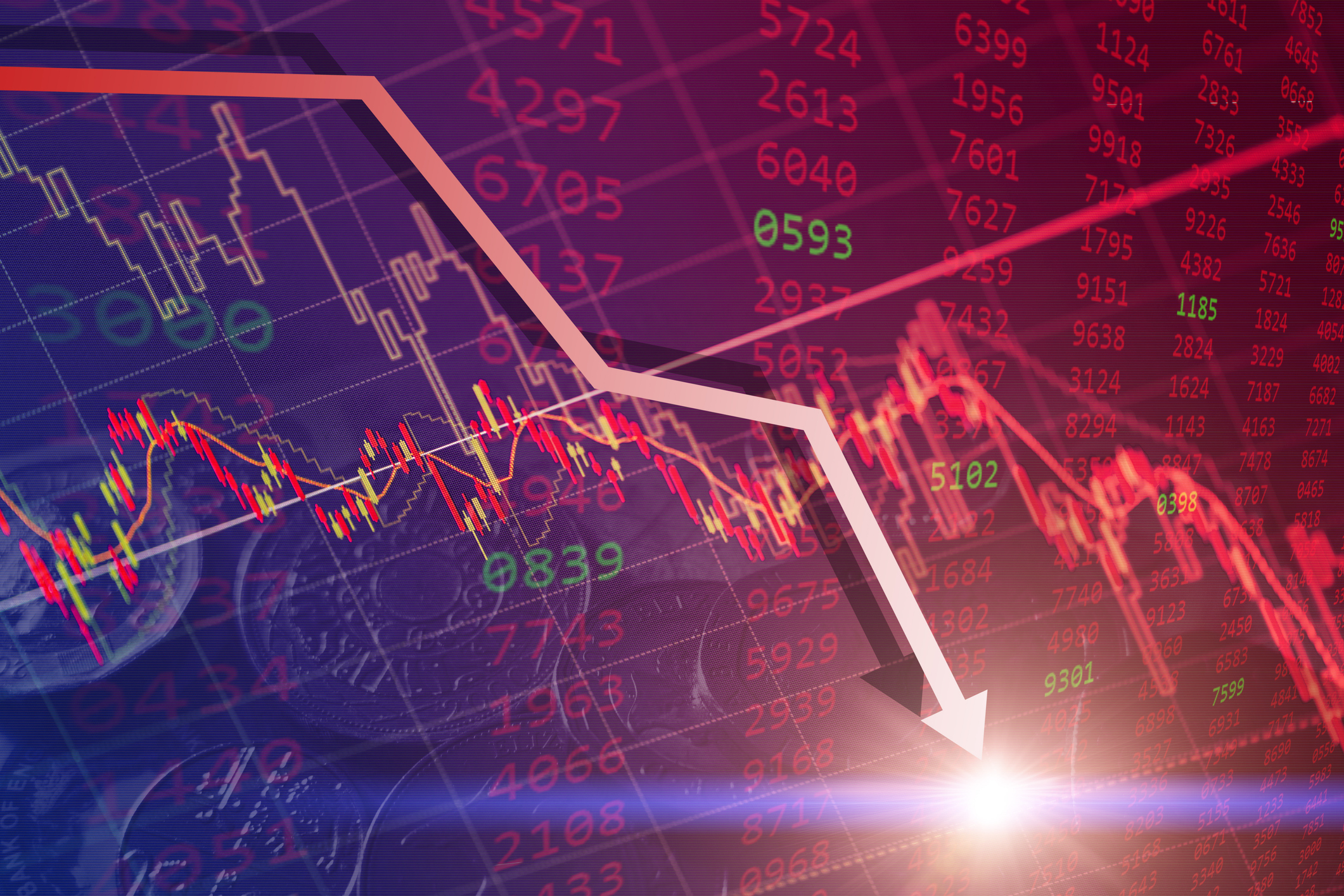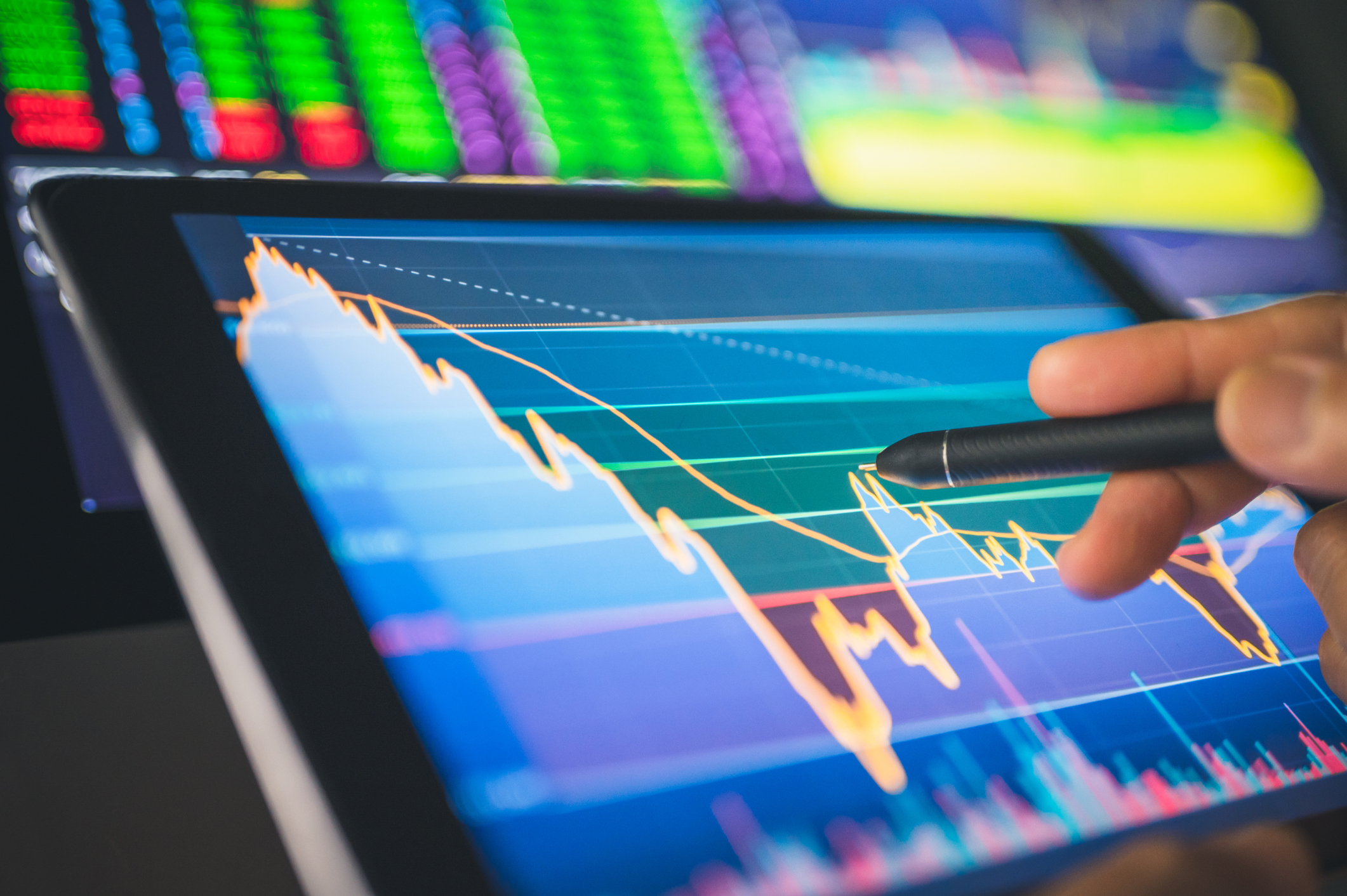What Is a Closed-End Fund? The ABCs of CEFs
Closed-end funds (CEFs) are powerful retirement tools that don't get much attention. We'll show you the basics, including what a CEF is, how they work, and their pros and cons.


Closed-end funds (CEFs) are an attractive option for income investors who want a combination of a high amount of passive income and diversification.
Too bad you rarely hear about them.
Because of their big yields – the average CEF yields 7.3%, according to data from CEF Insider – CEFs are especially popular with retirees. That's because they can retire on much less principal than would be necessary with an index fund such as the Vanguard 500 ETF (VOO).
From just $107.88 $24.99 for Kiplinger Personal Finance
Become a smarter, better informed investor. Subscribe from just $107.88 $24.99, plus get up to 4 Special Issues

Sign up for Kiplinger’s Free Newsletters
Profit and prosper with the best of expert advice on investing, taxes, retirement, personal finance and more - straight to your e-mail.
Profit and prosper with the best of expert advice - straight to your e-mail.
For instance, if you wanted to achieve $50,000 in annual income, it would require a mere $685,000 nest egg if invested in CEFs with that average 7.3% yield. But you would need nearly $4.4 million invested in the S&P 500 at today's yields to match that annual sum.
And that's not all closed-end funds offer.
I frequently discuss this fund class in my newsletter, CEF Insider, and I'd like to take you on a deep dive into this all-too-often-overlooked area of the market. So read on to learn what CEFs are, how they work, and how these funds can help diversify portfolios and boost retirement income.
What Is a CEF?
Closed-end funds are similar to mutual funds and exchange-traded funds (ETFs) in that they allow you to hold a baskets of stocks, bonds and other assets through a single vehicle.
For instance, the AllianzGI Equity & Convertible Income Fund (NIE), which yields 5.4%, invests in a cross-section of convertible bonds and common stocks, providing asset diversification in addition to sector and company diversification.
However, as the name suggests, CEFs are "closed," meaning that once they execute their initial public offering, the fund won't issue new shares to new investors. (There are ways for new shares to be issued to current investors, but these are infrequently and done at a very small volume).
This is in stark contrast to ETFs and mutual funds, which can issue as many shares as they like. But it does create an unusual opportunity – one in which you can buy shares in a CEF for less than they're really worth.
Market Price vs. NAV
Closed-end funds have a fixed amount of assets in their portfolio. The value of that portfolio is known as the fund's net asset value (NAV), which CEFs publish daily (this data is usually published by brokerages as well as some specialty websites like CEF Connect).
However, because CEFs always have a limited number of available shares, they can and typically do trade at a different price than their NAV, known as their market price. As of this writing, the average CEF trades at a 7% discount to NAV, meaning its market price is 7% less than its portfolio's actual value. Said differently, you can buy those assets for 7% less than you would by buying them outright or through an ETF.
For example, let's look at the Boulder Income & Growth Fund (BIF).
This value-investing CEF specializes in stocks with almost 40% of its portfolio in Berkshire Hathaway's A and B shares (BRK.A, BRK.B). Because BIF trades at an 18% discount to NAV, you can buy BIF and get exposure to Warren Buffett's company (and a number of other stocks) for less than you would pay if you bought the shares directly on a stock exchange. That's even after including BIF's 1.11% in annual expenses.
CEF "Yields"
CEFs regularly pay out distributions, which are similar to dividends, but not the same thing.
A stock, which typically pays a "qualified dividend," is distributing purely cash income that is taxed at a specific, lower rate than ordinary income.
But a closed-end fund's distribution can be made up not just of equity dividends, but also bond interest payments, realized capital gains and return of capital. Some of that is taxed differently, so it's possible that you might keep more of one fund's 7% distribution than another, after taxes, depending on the makeup of those distributions.
Also, we mentioned that CEFs yield more than 7% on average. But some yield much more. For instance, the Cornerstone Strategic Value Fund (CLM) has a distribution rate of more than 19%.
As I frequently tell my readers, distribution rates that large are rarely sustainable. And CEFs that promise such big yields can cut payments over time. (CLM recently announced a smaller dividend for 2021 – one in a long series of cuts it has made over the past decade-plus.)
CEF investors should target funds with a large yield that provides a strong income stream, but not so large that the yield will inevitably be cut. One helpful clue: the distribution-to-NAV ratio.
Because closed-end fund managers must earn a market return based on the NAV to pay distributions to shareholders, distribution-to-NAV ratio can be educational. For instance, CLM's 19.2% yield on price is a 22.8% yield on NAV because of its 18.6% premium to NAV. To sustain payouts, then CLM's management will need to earn a return of 22.8% before fees. It's no wonder they keep cutting payouts.
On the other hand, the aforementioned AllianzGI Equity & Convertible Income Fund's 5.4% yield, because the CEF trades at a discount, is effectively a 4.9% yield on NAV. That means NIE's management only needs to earn a 4.9% return before fees to sustain payouts. NIE has earned a 11.9% annualized return after fees over the last decade, so sustaining its payouts is not a problem. (The fund has not cut distributions in the last 10 years, and it actually raised them in 2014.)
Active Management
Because closed-end funds are actively managed, managers can allocate capital according to which assets are performing best while avoiding laggards. Index funds, however, must stick to strict rules.
That's why, for instance, most preferred stock CEFs have outperformed the passive iShares Preferred and Income Securities ETF (PFF) in 2020, according to recent CEF Insider data.
But not all CEFs outperform.
In some cases, it just can't be helped. Some CEFs still have strict mandates that result in losses if what they invest in underperforms. For instance, all energy closed-end funds have at least underperformed the market, and most will finish 2020 in the red, because of the excessive pain in oil prices.
Moreover, like mutual funds and ETFs, some CEF managers are simply better than others. That's why it's important to choose the right teams when picking closed-end funds.
CEF Fees
Many conventional fund investors faint when they hear about CEF fees. The average annual expenses for a CEF run at 2.2%, according to Morningstar data.
That's a world away from the 0.03% that VOO charges!
Just like ETFs, those fees are taken directly out of the fund's performance; you don't send them a check or have any money pulled from your account. Also, like with any fund, if you've got a great manager, you'll end up with more money in the long run by paying those higher fees.
Let's consider one investor who bought $100,000 in the Liberty All-Star Growth Fund (ASG) a decade ago, and another investor who bought $100,000 worth of VOO. Both are broad market stock funds, but ASG's strategy is more aggressive – and expensive.
The ASG investor has paid 0.79% in annual fees; in other words, for every $100,000 invested, $790 will be taken out of the fund's performance to cover expenses. VOO will take out just $40.
However, the investor holding ASG has seen their principal grow to $443,300 after a decade, while the VOO investors has ended up with $362,300.
Chasing low fund fees is very popular, and it makes sense – if all else is equal, lower expenses let you keep more of your returns. But some CEFs can vastly outperform their indexed counterparts, justifying their high fees.
How Closed-End Funds Use Leverage
You should also know that you're paying for more than just management fees. These expense ratios often also include the costs of leverage – a tool that closed-end funds have at their disposal that can be a real benefit for CEF investors.
Leverage, which is borrowing funds to invest even more in assets, sounds scary, but many CEFs use it well. That's because closed-end funds often can borrow funds at low rates – lately, at 1% or less – and they use that money to invest more in their target assets, which can return far more than the rate at which they borrowed.
It's much more difficult for individuals to borrow at such low costs, so CEFs are a great way to access institutional borrowing power without actually being an institution.
Market regulations and laws restrict how much closed-end funds can lever, and most CEFs fall far, far short of that limit. Even in the big market crashes of 2008 and 2020, CEFs did not hit their leverage limits. Unlike exchange-traded notes (ETNs), no closed-end fund outside of the energy sector went bust due to the 2020 bear market.
But some CEFs can and do sometimes lever aggressively, so pay close attention to their "leverage ratio." Some CEFs have no leverage, others have low leverage in the single digits. Above that, and you likely have a more aggressive fund. Make sure you balance risk appropriately with unbalanced CEFs and other assets.
How to Buy and Sell CEFs
Like ETFs, closed-end funds are traded on major exchanges. That means you can buy and sell CEFs during regular trading hours like you would any stock or ETF.
Closed-end funds tend to be actively traded, but they are a much smaller universe than ETFs (there are about 500 active CEFs in the U.S. versus more than 2,000 ETFs), and they tend to trade at smaller volumes.
Size and Liquidity
Closed-end funds vary in size and investment strategy. Some funds hold less than $50 million in assets, while others manage billions. Larger CEFs do not always outperform smaller CEFs or vice versa.
However, very small CEFs can sometimes trade with large bid/ask spreads that investors should be aware of. This lack of liquidity could be problematic in times of market stress; investors who want to sell may find that, for instance, they cannot catch a bid for $10.50 even if their broker quotes the CEF at that price, and they will need to sell at $10.45.
Normally, bid/ask spreads for CEFs tend to be tight; even when they are wide, they are almost never larger than 5 cents during trading hours. But very large positions in CEFs (say, $1 million or more) might be difficult to buy without driving the price higher, or to sell without driving the price down.
Michael Foster is the head research analyst and writer for CEF Insider, a newsletter dedicated to high yielding closed-end funds. For more great income ideas, check out Michael's latest free special report, Indestructible Income: 5 Bargain Funds with Safe 8.7% Dividends.
Profit and prosper with the best of Kiplinger's advice on investing, taxes, retirement, personal finance and much more. Delivered daily. Enter your email in the box and click Sign Me Up.

-
 Changes Are Coming for This Invesco Bond Fund
Changes Are Coming for This Invesco Bond FundThe Invesco BulletShares 2026 Corporate Bond ETF's bonds will mature in 2026. Here's what investors should do.
-
 What Science Reveals About Money and a Happy Retirement
What Science Reveals About Money and a Happy RetirementWhether you’re still planning or already retired, these research-based insights point the way to your best post-work life.
-
 7 Retirement Planning Trends: What They Mean for You in 2026
7 Retirement Planning Trends: What They Mean for You in 2026From government shutdowns to market swings, the past 12 months have been nothing if not eventful. The key trends can help you improve your own financial plan.
-
 The Santa Claus Rally Officially Begins: Stock Market Today
The Santa Claus Rally Officially Begins: Stock Market TodayThe Santa Claus Rally is officially on as of Wednesday's closing bell, and initial returns are positive.
-
 'Humbug!' Say Consumers, Despite Hot GDP: Stock Market Today
'Humbug!' Say Consumers, Despite Hot GDP: Stock Market Today"The stock market is not the economy," they say, but both things are up. Yet one survey says people are still feeling down in the middle of this complex season.
-
 Stocks Rise to the Spirit of the Season: Stock Market Today
Stocks Rise to the Spirit of the Season: Stock Market TodayInvestors, traders and speculators are beginning to like the looks of a potential year-end rally.
-
 Nasdaq Leads as Tech Stages Late-Week Comeback: Stock Market Today
Nasdaq Leads as Tech Stages Late-Week Comeback: Stock Market TodayOracle stock boosted the tech sector on Friday after the company became co-owner of TikTok's U.S. operations.
-
 Cooler Inflation Supports a Relief Rally: Stock Market Today
Cooler Inflation Supports a Relief Rally: Stock Market TodayInvestors, traders and speculators welcome much-better-than-hoped-for core CPI data on top of optimism-renewing AI earnings.
-
 Nasdaq Sinks 418 Points as Tech Chills: Stock Market Today
Nasdaq Sinks 418 Points as Tech Chills: Stock Market TodayInvestors, traders and speculators are growing cooler to the AI revolution as winter approaches.
-
 Stocks Chop as the Unemployment Rate Jumps: Stock Market Today
Stocks Chop as the Unemployment Rate Jumps: Stock Market TodayNovember job growth was stronger than expected, but sharp losses in October and a rising unemployment rate are worrying market participants.
-
 Stocks Struggle Ahead of November Jobs Report: Stock Market Today
Stocks Struggle Ahead of November Jobs Report: Stock Market TodayOracle and Broadcom continued to fall, while market participants looked ahead to Tuesday's jobs report.